Motorola Moto X Pure Edition Review
The Moto X Pure Edition’s software is purely Android, its attractive styling is purely Motorola, and its customization options make it purely yours.
Why you can trust Tom's Hardware
Camera Performance And Photo Quality
It’s time to put the Moto X Pure Edition’s new camera to the test. We’ll be comparing its images to identical ones taken with the 16 MP Sony Exmor RS IMX240 camera in Samsung’s Galaxy S6. This is not meant to be a fair comparison since the Galaxy S6 is a more expensive flagship device, but as the current leader in smartphone photo quality, it will serve as the gold standard.
All of the images shown below were taken with the default camera app using the Auto mode unless noted. Also, you can view the full-sized image for each photo by clicking the text links below the images that are within a slideshow album. The Moto X Pure Edition shoots natively at a 4:3 aspect ratio, while the Galaxy S6 shoots natively at 16:9.
Outdoors
Daylight
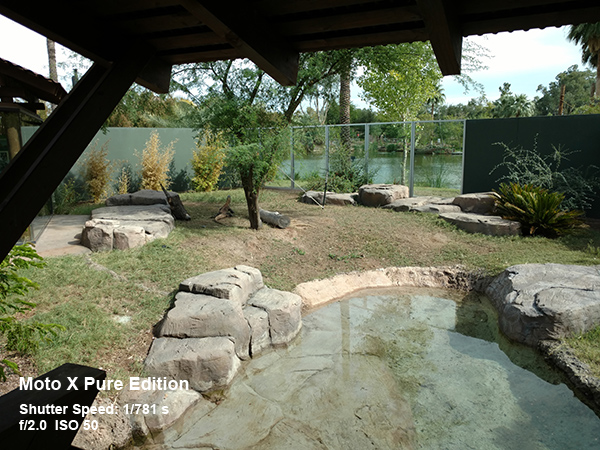

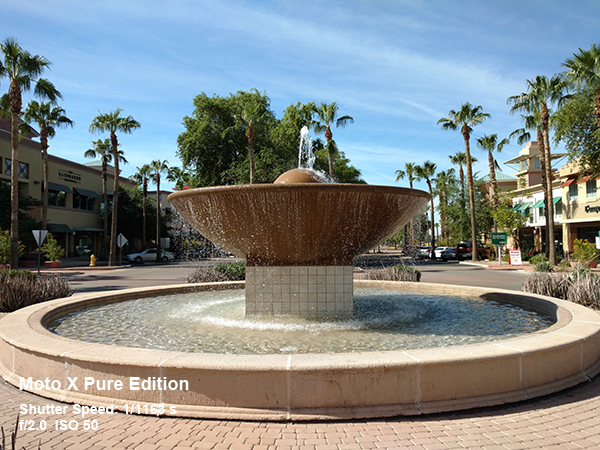
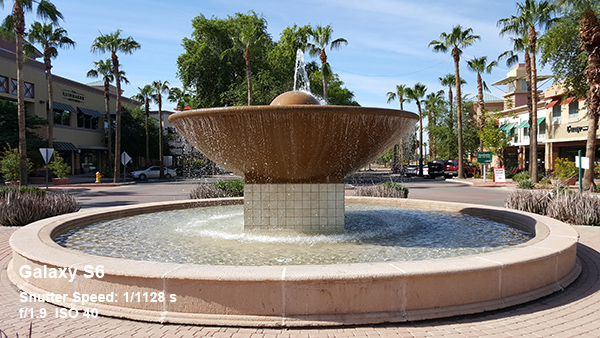
Full-Size Images: [Moto X Pure Edition: daylight dragon], [Galaxy S6: daylight dragon], [Moto X Pure Edition: daylight fountain], [Galaxy S6: daylight fountain]
There’s plenty of light in the first set of images, allowing both cameras to use low ISO settings. The Pure Edition’s white balance is a bit cooler than the Galaxy S6’s, but this is partially because of a small change in brightness from the cloud cover. Zooming in reveals less noise grain in the Pure Edition’s image, especially in the background and the dark gray wall on the right, because of its additional noise reduction post-processing. This has the negative side effect of smearing away some fine detail, which is evident on the rocks at the foot of the gray wall.
The Pure Edition does an excellent job capturing the fountain in the second set of images. Its higher-resolution sensor clearly captures more detail than the S6, and its image is less noisy too. Noise reduction does smear away some detail on flat surfaces in the Pure Edition’s image, like the bricks on the road, but it’s not excessive. Comparing white balance, the Moto X captures the color of the sky better, but the S6 does better with the fountain.
Afternoon
Get Tom's Hardware's best news and in-depth reviews, straight to your inbox.
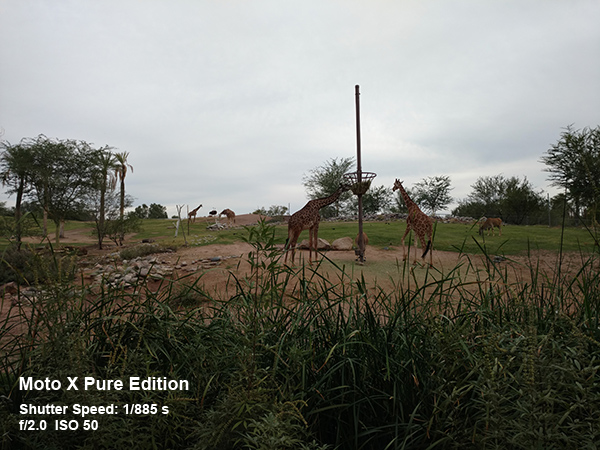

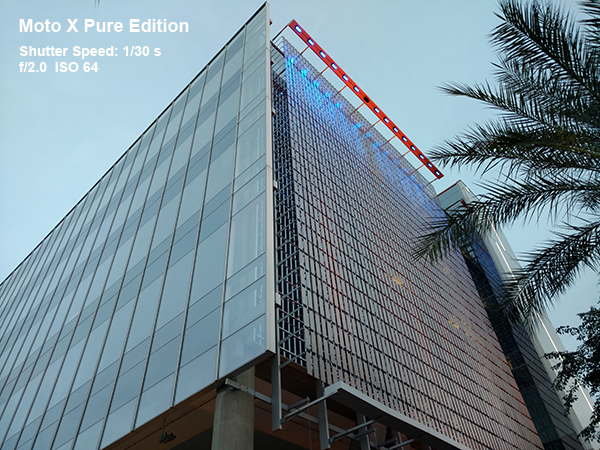
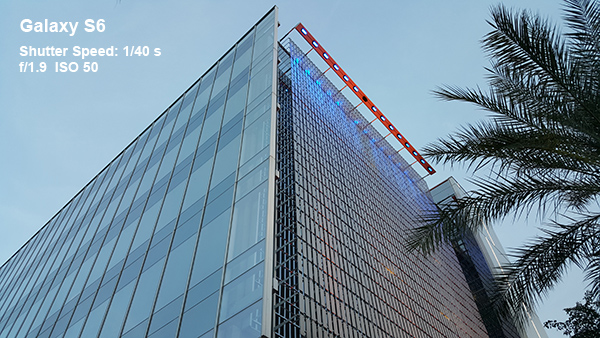
Full-Size Images: [Moto X Pure Edition: afternoon giraffes], [Galaxy S6: afternoon giraffes], [Moto X Pure Edition: afternoon building], [Galaxy S6: afternoon building]
When it comes to snapping pictures of giraffes in the afternoon under an overcast sky, the Moto X Pure Edition starts to struggle. The white balance skews a bit cool, and there’s less color saturation than in the S6 image. The Pure Edition’s stock camera also appears to be using higher jpeg image compression, since its image shows more artifacts around edges. These issues are fairly minor, though, compared to the overly aggressive noise reduction processing that smears away almost all of the detail in the grass and fence in the background.
The Pure Edition’s aggressive noise reduction works to its advantage in the second image of the building taken at sunset. Where the S6 was the clear victor in the giraffe scene, the Moto X does better with the building. In general, because of how the Pure Edition’s noise reduction works, it tends to do well in modestly-lit scenes with mostly flat, smooth surfaces, like buildings or sky, but struggles when the scene has lots of tiny details, like grass and trees outdoors.
Evening

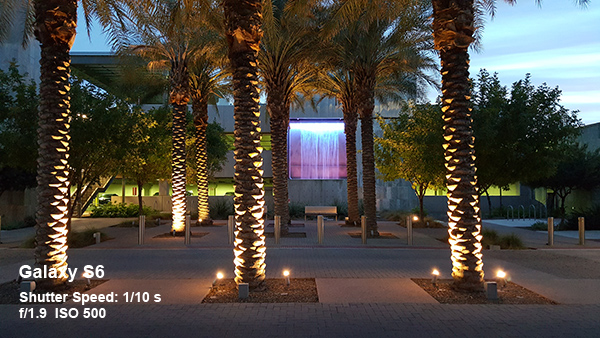
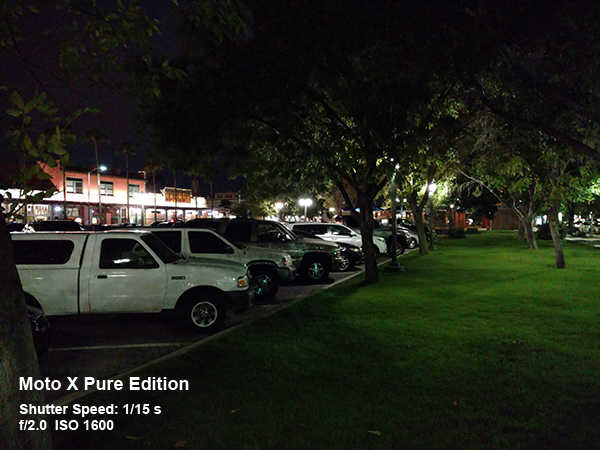
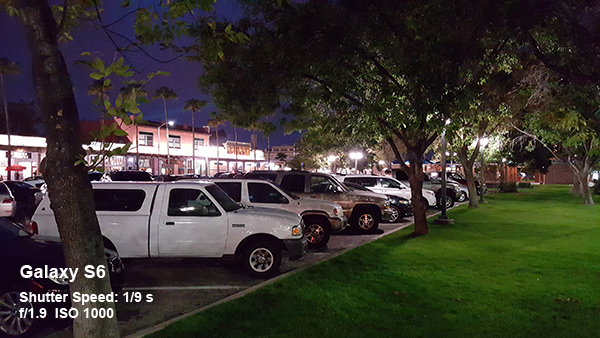
Full-Size Images: [Moto X Pure Edition: evening trees], [Galaxy S6: evening trees], [Moto X Pure Edition: evening parking lot], [Galaxy S6: evening parking lot]
In the first set of images with the palm trees, the sun is just dipping below the horizon, giving the cameras very little light to work with. Without OIS, the Moto X cannot take as long of an exposure as the S6, resulting in a darker image despite using a much higher ISO setting. As light levels drop, the Pure Edition’s noise reduction seems to get more aggressive, which hurts overall image quality. The bricks on the ground and the wall in the background have almost all of their detail wiped away. It does do a decent job setting white balance, though.
It’s the same story in the parking lot scene: The S6 produces a brighter image (perhaps a bit too bright) with more visible noise but also more detail.
HDR
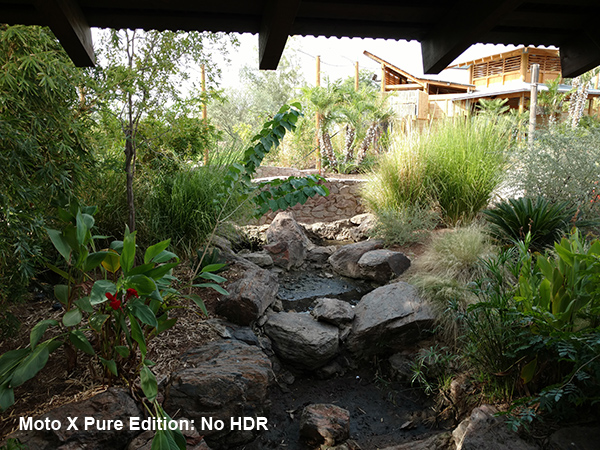
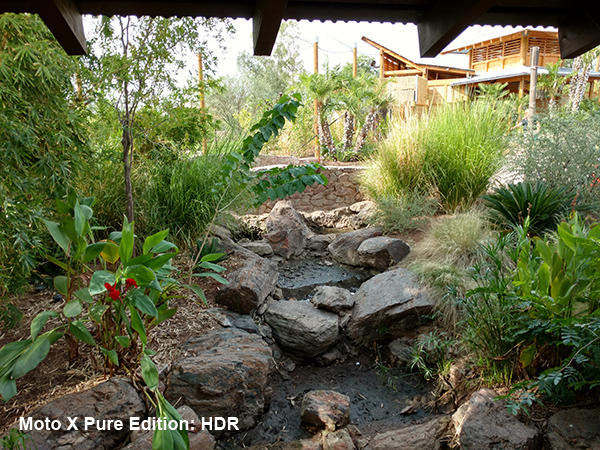
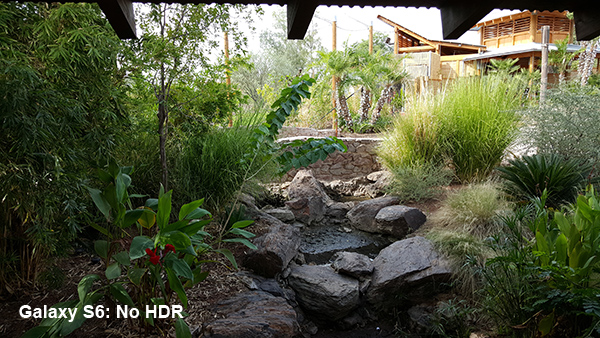
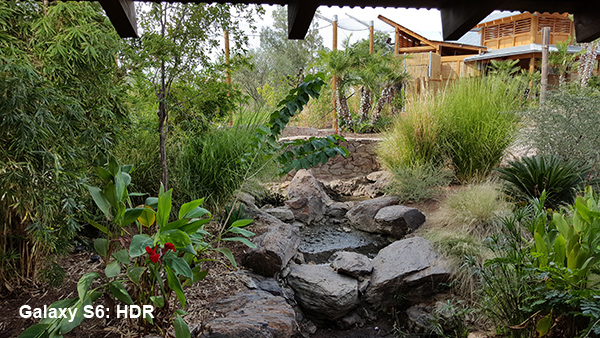
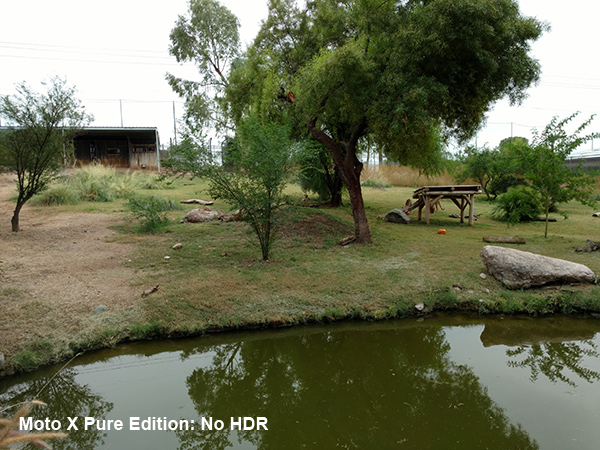
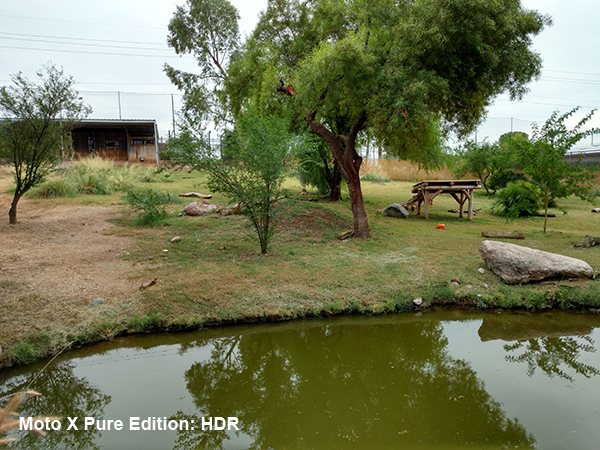
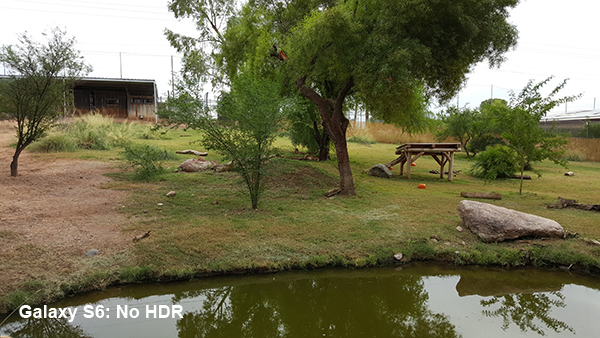

Full-Size Images: [Moto X Pure Edition: stream - no HDR], [Moto X Pure Edition: stream - HDR], [Galaxy S6: stream - no HDR], [Galaxy S6: stream - HDR], [Moto X Pure Edition: cheetahs - no HDR], [Moto X Pure Edition: cheetahs - HDR], [Galaxy S6: cheetahs - no HDR], [Galaxy S6: cheetahs - HDR]
The Moto X comes with automatic HDR for both the front and rear cameras. Unlike some flagship phones, it does not display a real-time preview of the HDR effect on the screen. The HDR processing also slows down the camera, increasing shot-to-shot latency from about half a second to around two seconds, which is common for phones in this price range.
HDR quality is pretty good, but it’s definitely not as good as the Galaxy S6. The Pure Edition does well brightening the darker areas of the image, but is just a little too aggressive, over-brightening some of the lighter areas. While it compensates somewhat for the overexposed sky in the first image, it is not able to remove the glare from the building’s roof like the S6 does. In the second image with an overcast sky, the Pure Edition’s HDR mode performs better, revealing the detail of the fence and powerlines in the background.
Indoors
The staged indoor shots below were lit by overhead LED lights, a CFL lamp from the front, and an incandescent overhead light in the background.
Bright Light




Full-Size Images: [Moto X Pure Edition: indoor mall], [Galaxy S6: indoor mall], [Moto X Pure Edition: indoor bright], [Galaxy S6: indoor bright]
The artificial light in the shopping mall causes the Moto X to set a cooler white balance. Similar to what we saw in the afternoon shots, its noise reduction works well when removing noise grain from flat, smooth surfaces, like the walls, but smears away some detail from the bricks and floor. The higher resolution sensor captures more detail in areas not affected by noise reduction.
The staged scene is a bit more challenging because of the mixed light sources and less overall light. The Galaxy S6 sets exposure correctly, but even though the Moto X uses the same shutter speed, it sets ISO twice as high, overexposing the scene and clipping the highlights on the figurines’ heads. The Moto X does a better job setting white balance, however, avoiding the green tint that degrades the S6’s image.
Low Light and Flash
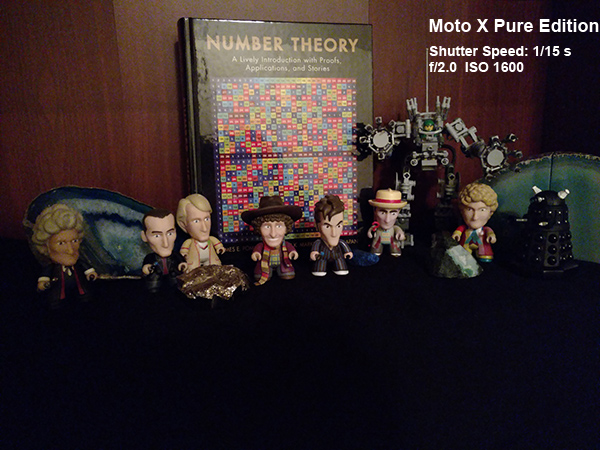



Full-Size Images: [Moto X Pure Edition: indoor dark], [Galaxy S6: indoor dark], [Moto X Pure Edition: indoor flash], [Galaxy S6: indoor flash]
In this dimly lit scene, the Galaxy S6 excels; it gets a good exposure and captures a lot of detail, all while keeping noise low. Low-light scenes are kryptonite for the Moto X, however. Its lack of OIS limits exposure time, resulting in a darker image. White balance is also too cool and colors lack saturation. The Pure Edition’s overly aggressive noise reduction further reduces image quality, creating odd yellow splotches and reducing overall sharpness.
Turning the Pure Edition’s dual-color LED flash on produces much better results. Colors look very natural, and the image looks very sharp with minimal noise.
The Moto X Pure Edition’s camera is a big step up from the previous generation. Its image quality in good lighting is superb, rivaling even the excellent camera in the Galaxy S6. As the light fades, however, the Pure Edition’s heavy noise reduction post-processing starts wiping away more and more detail. In scenes dominated by flat, smooth surfaces, this ends up being a positive, but for most scenes it ends up reducing quality. This is especially true in very low-light conditions. White balance was never a problem for the Pure Edition in our tests, but the lack of OIS limits exposure time in low-light situations, leading to darker images.
Current page: Camera Performance And Photo Quality
Prev Page Camera Features Next Page Performance And Battery Life